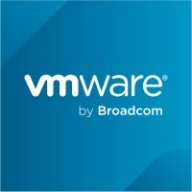

Databricks and Spring Cloud Data Flow operate in the data processing and analytics domain. Databricks has a competitive edge due to its robust analytics capabilities and fast data processing integration with Python and Spark.
Features: Databricks supports large-scale analytics with built-in optimization recommendations for enhanced query performance and speed. The integration with Python and Spark provides fast data processing and machine learning capabilities. Its flexible use of programming languages and collaborative notebooks offer significant versatility. Spring Cloud Data Flow excels in microservices orchestration, dependency injection, and composability, ideal for flexible lightweight processing tasks.
Room for Improvement: Databricks could improve its visualization capabilities, enhance integration with tools like Power BI, and expand machine learning libraries. Users have noted its high cost and desire for more accessible technical documentation. Spring Cloud Data Flow could benefit from a better user interface, additional language support, and greater community engagement, along with improved documentation and dashboard features.
Ease of Deployment and Customer Service: Databricks supports deployments in public and hybrid clouds, praised for its responsive technical support, though communication may occasionally falter due to intermediary providers. Spring Cloud Data Flow is generally deployed on-premises or in private clouds, with clear documentation but less robust community support due to its open-source nature.
Pricing and ROI: Databricks operates on a pay-per-use model, often deemed expensive yet justified by its comprehensive features, with ROI experiences varying by cloud usage and scale. Spring Cloud Data Flow, as an open-source option, offers cost benefits, though official support incurs fees, aligning with its community-driven framework and offering good value in community editions.
| Product | Market Share (%) |
|---|---|
| Databricks | 10.0% |
| Spring Cloud Data Flow | 4.1% |
| Other | 85.9% |

| Company Size | Count |
|---|---|
| Small Business | 25 |
| Midsize Enterprise | 12 |
| Large Enterprise | 56 |
| Company Size | Count |
|---|---|
| Small Business | 3 |
| Midsize Enterprise | 1 |
| Large Enterprise | 5 |
Databricks offers a scalable, versatile platform that integrates seamlessly with Spark and multiple languages, supporting data engineering, machine learning, and analytics in a unified environment.
Databricks stands out for its scalability, ease of use, and powerful integration with Spark, multiple languages, and leading cloud services like Azure and AWS. It provides tools such as the Notebook for collaboration, Delta Lake for efficient data management, and Unity Catalog for data governance. While enhancing data engineering and machine learning workflows, it faces challenges in visualization and third-party integration, with pricing and user interface navigation being common concerns. Despite needing improvements in connectivity and documentation, it remains popular for tasks like real-time processing and data pipeline management.
What features make Databricks unique?
What benefits can users expect from Databricks?
In the tech industry, Databricks empowers teams to perform comprehensive data analytics, enabling them to conduct extensive ETL operations, run predictive modeling, and prepare data for SparkML. In retail, it supports real-time data processing and batch streaming, aiding in better decision-making. Enterprises across sectors leverage its capabilities for creating secure APIs and managing data lakes effectively.
Spring Cloud Data Flow is a toolkit for building data integration and real-time data processing pipelines.
Pipelines consist of Spring Boot apps, built using the Spring Cloud Stream or Spring Cloud Task microservice frameworks. This makes Spring Cloud Data Flow suitable for a range of data processing use cases, from import/export to event streaming and predictive analytics. Use Spring Cloud Data Flow to connect your Enterprise to the Internet of Anything—mobile devices, sensors, wearables, automobiles, and more.
We monitor all Streaming Analytics reviews to prevent fraudulent reviews and keep review quality high. We do not post reviews by company employees or direct competitors. We validate each review for authenticity via cross-reference with LinkedIn, and personal follow-up with the reviewer when necessary.